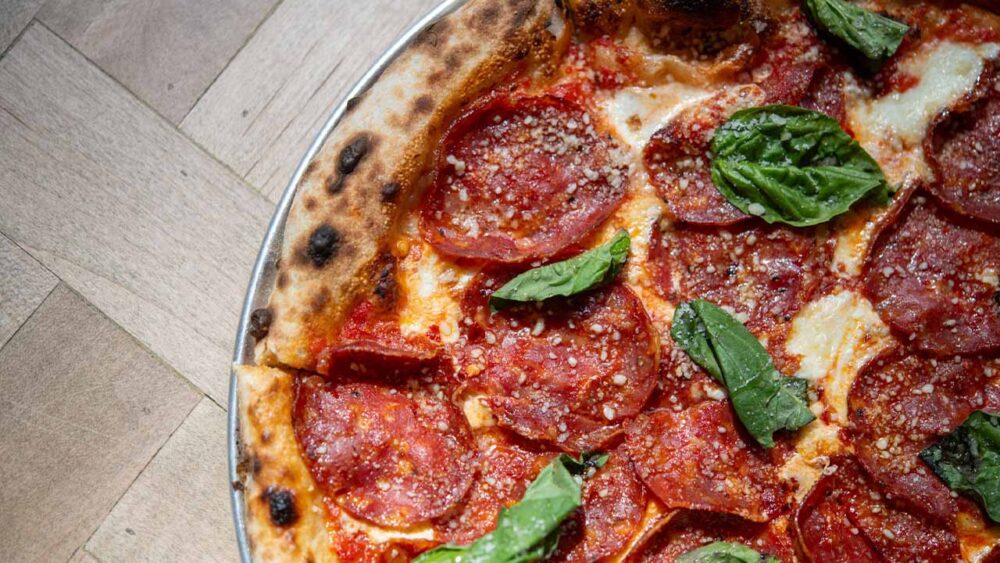More Than 90% of Shoppers Now Buy Groceries Both In-Store and Online—Restaurants, Convenience Stores, and Service Delis Must Adapt The food retail landscape is rapidly evolving, and digital engagement is driving a fundamental shift in consumer behavior. FMI—The Food Industry Association and NielsenIQ (NIQ) have released their latest report, Digital Engagement Transforms Grocery Shopping, revealing that over 90% of shoppers now purchase groceries both in-store and online. This shift underscores the importance of omnichannel strategies for grocers, restaurants, convenience stores, and service delis as they navigate a marketplace where digital accessibility is no longer optional—it's essential for survival. Digital Sales Surpass Expectations Back in 2017, industry experts projected that online grocery sales would reach $100 billion by 2025, capturing 20% of market share. However, this year’s report finds that those expectations were shattered, with U.S. online grocery sales now expected to hit $388 billion by 2027, accounting for nearly 25% of total grocery sales. This growth is largely fueled by e-commerce platforms, retailer apps, and AI-driven personalization, alongside increased consumer reliance on convenience-driven food solutions. The Grocerant Movement and Foodservice Digital Expansion The rise of online grocery shopping has broad implications for the restaurant, convenience store, and foodservice industries, reinforcing the need to integrate fresh, ready-to-eat, and prepared meal solutions into digital channels according to Steven Johnson Grocerant Guru® at Tacoma, WA based Foodservice Solutions®. Key Industry Takeaways: · Restaurant Meal Delivery Continues to Surge: With nearly 60% of consumers ordering meals for delivery at least once a week, restaurant operators must enhance their digital presence, ensuring seamless online ordering and integration with third-party platforms. · Convenience Stores Go Digital: C-stores must expand their food offerings beyond impulse purchases by leveraging mobile ordering, loyalty apps, and digital marketing to promote fresh-prepared meals, snacks, and beverages. · Service Deli Online Expansion: Grocery store delis, a critical component of the grocerant movement, must extend their presence online, offering pre-ordering, meal kit options, and prepared food solutions to compete with quick-service restaurants. · Curbside Pickup and AI Integration: The report finds that curbside pickup (31%) now surpasses same-day home delivery (29%) as a preferred option for online grocery shoppers. Grocers and foodservice operators must refine their operations to optimize pickup experiences and use AI-driven personalization to meet evolving consumer expectations. Social Media’s Influence on Food Purchases One of the most striking trends in the report is the rise of social commerce. Fifty-five percent of respondents now make direct purchases from social media platforms, including meal solutions, grocery staples, and foodservice options. This signals a growing need for food retailers and service providers to invest in targeted digital marketing strategies, influencer collaborations, and AI-enhanced personalization to engage the next generation of shoppers. The Future of Food Retail: Meeting Consumers Where They Are Digital engagement is no longer a side strategy—it’s the driving force behind food retail’s evolution. Restaurants, convenience stores, and grocery service delis must embrace this transformation by integrating digital ordering, enhancing meal delivery options, and ensuring a frictionless online-to-offline experience. As food consumption patterns continue to shift, industry players must prioritize digital connectivity, personalization, and service-driven solutions to stay ahead. The Digital Engagement Transforms Grocery Shopping report makes it clear: omnichannel innovation isn’t just a trend—it’s the future of food retail. Stay Ahead of the Competition with Fresh Ideas Is your food marketing keeping up with tomorrow’s trends—or stuck in yesterday’s playbook? If you're ready for fresh ideations that set your brand apart, we’re here to help. At Foodservice Solutions®, we specialize in consumer-driven retail food strategies that enhance convenience, differentiation, and individualization—key factors in driving growth. 👉 Email us at [email protected] 👉 Connect with us on social media: Facebook, LinkedIn, Twitter
More Than 90% of Shoppers Now Buy Groceries Both In-Store
and Online—Restaurants, Convenience Stores, and Service Delis Must Adapt
The food retail landscape is rapidly evolving, and digital
engagement is driving a fundamental shift in consumer behavior. FMI—The Food Industry Association and NielsenIQ
(NIQ) have released their latest report, Digital Engagement Transforms Grocery Shopping, revealing that over 90% of shoppers now purchase
groceries both in-store and online. This shift underscores the importance of
omnichannel strategies for grocers, restaurants, convenience stores, and
service delis as they navigate a marketplace where digital accessibility is no
longer optional—it's essential for survival.
Digital Sales Surpass Expectations
Back in 2017, industry experts projected that online
grocery sales would reach $100 billion by 2025, capturing 20% of market share.
However, this year’s report finds that those expectations were shattered, with
U.S. online grocery sales now expected to hit $388 billion by 2027, accounting
for nearly 25% of total grocery sales. This growth is largely fueled by
e-commerce platforms, retailer apps, and AI-driven personalization, alongside
increased consumer reliance on convenience-driven food solutions.
The Grocerant Movement and Foodservice
Digital Expansion
The rise of online grocery shopping has broad implications
for the restaurant, convenience store, and foodservice industries, reinforcing
the need to integrate fresh, ready-to-eat, and prepared meal solutions into
digital channels according to Steven Johnson Grocerant Guru® at Tacoma, WA based Foodservice
Solutions®.
Key Industry Takeaways:
·
Restaurant Meal
Delivery Continues to Surge:
With nearly 60% of consumers ordering meals for delivery at least once a week,
restaurant operators must enhance their digital presence, ensuring seamless
online ordering and integration with third-party platforms.
·
Convenience Stores
Go Digital: C-stores must expand their food
offerings beyond impulse purchases by leveraging mobile ordering, loyalty apps,
and digital marketing to promote fresh-prepared meals, snacks, and beverages.
·
Service Deli Online
Expansion: Grocery store delis, a critical
component of the grocerant movement, must extend their presence online,
offering pre-ordering, meal kit options, and prepared food solutions to compete
with quick-service restaurants.
·
Curbside Pickup and
AI Integration: The report finds that curbside pickup
(31%) now surpasses same-day home delivery (29%) as a preferred option for
online grocery shoppers. Grocers and foodservice operators must refine their
operations to optimize pickup experiences and use AI-driven personalization to
meet evolving consumer expectations.
Social Media’s Influence on Food
Purchases
One of the most striking trends in the report is the rise
of social commerce. Fifty-five percent of respondents now make direct purchases
from social media platforms, including meal solutions, grocery staples, and
foodservice options. This signals a growing need for food retailers and service
providers to invest in targeted digital marketing strategies, influencer
collaborations, and AI-enhanced personalization to engage the next generation
of shoppers.
The Future of Food Retail: Meeting
Consumers Where They Are
Digital engagement is no longer a side strategy—it’s the
driving force behind food retail’s evolution. Restaurants, convenience stores,
and grocery service delis must embrace this transformation by integrating
digital ordering, enhancing meal delivery options, and ensuring a frictionless
online-to-offline experience.
As food consumption patterns continue to shift, industry
players must prioritize digital connectivity, personalization, and
service-driven solutions to stay ahead. The Digital Engagement Transforms Grocery Shopping report makes it clear: omnichannel innovation isn’t just a
trend—it’s the future of food retail.
Stay Ahead of the Competition with
Fresh Ideas
Is your food marketing keeping up with tomorrow’s trends—or
stuck in yesterday’s playbook? If you're ready for fresh ideations that set
your brand apart, we’re here to help.
At Foodservice Solutions®, we specialize in consumer-driven
retail food strategies that enhance convenience, differentiation, and
individualization—key factors in driving growth.
👉 Email us at [email protected]
👉 Connect with us on social media: Facebook, LinkedIn,
Twitter














